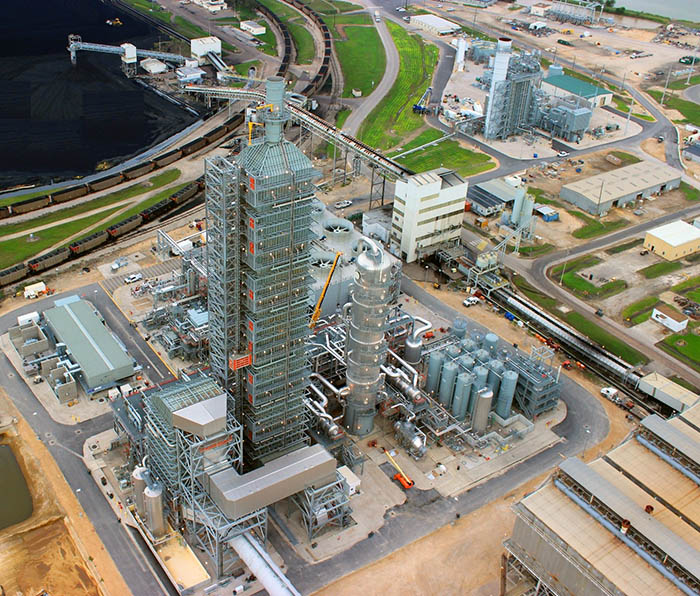Looking forward with 30 years of perspective
/The last 30 years have transformed the way we understand and address human impact on the environment, and have increased emphasis on conducting business in an environmentally sensitive manner. Since its founding in 1988, PHE has been helping businesses and government agencies achieve a balance between mission-effectiveness and protection of our natural resources. With three decades of hard-earned experience, PHE’s commitment to helping our clients navigate complex environmental requirements – and address new environmental and societal challenges – is stronger than ever!
Rising to the Regulatory Challenge
PHE was created in a period of rapid expansion of environmental requirements. In the 1970s and 1980s, the emergence of environmental laws such as the Clean Air Act (CAA); Clean Water Act (CWA); Comprehensive Environmental Response, Compensation, and Liability Act (CERCLA or Superfund); National Environmental Policy Act (NEPA); Safe Drinking Water Act (SDWA); and the Resource Conservation and Recovery Act (RCRA) created a complex set of requirements for regulated industries. And, with the passage of the Federal Facilities Compliance Act of 1992, it was clear that environmental requirements would also apply to federal agencies.
PHE was instrumental in supporting compliance programs for numerous federal organizations, including the Maritime Administration, Coast Guard, Marine Corps, National Guard, Department of Veterans Affairs, Federal Aviation Administration, and the U.S. Mint.
From the very beginning, PHE focused on applying senior-level expertise to solving our clients’ environmental challenges, integrating environmental stewardship into their existing cultures and practices while maintaining organizational missions and objectives.
Some early steps included:
Establishing training programs on environmental laws and requirements, tailored to executive management and shop-level personnel.
Implementing comprehensive regulatory compliance programs and systems.
Inspecting operations to understand compliance posture, risks, and root causes of problems.
Developing standardized Environmental Management Systems (EMS) to ensure continued compliance and continual improvement.
Since our founding, PHE has supported defense and civilian agency clients in assessing the potential environmental effects of federal actions ranging from construction and training operations on military bases to construction and operation of large utility facilities and campuses.
During this period, the federal sector was increasingly evaluating the potential effects of its decisions on the environment. Agencies were asked to conduct thorough environmental reviews, using the Environmental Assessment and Environmental Impact Statement (EIS) process, while also meeting urgent project objectives and timelines. PHE supported our clients by providing sound advice during project planning and preparing focused, high-quality, and timely environmental reviews.
Moving Toward Sustainability and Resiliency
As we moved into the 21st century and environmental compliance programs became more established, the needs shifted toward finding ways to lessen the regulatory burden and reduce our environmental footprint. While compliance remained a key focus, waste minimization and pollution prevention emerged as proactive approaches to reducing the burden (and cost) of compliance programs. PHE actively supported the evolution of our clients’ environmental programs by:
Developing agency responses to new requirements for pollution prevention, EMS, and sustainability programs.
Implementing robust EMSs across the federal sector to standardize environmental programs and drive continual performance improvement.
Implementing facility-level programs to reduce greenhouse gases, conserve energy and water, reduce waste and the use of toxic materials, and prioritize the procurement of “green” goods and services.
As far back as 1998, PHE support to Headquarters, United States Marine Corps and the Chief of Naval Operations was instrumental in developing service-specific EMSs tailored to unique mission, organizational, and environmental challenges.
Global climate concerns accelerated at both the public and policymaker levels, resulting in a wave of domestic and international initiatives to reduce greenhouse gas emissions. The momentum increased after the 2007 U.S. Supreme Court decision allowing states to regulate greenhouse gases. PHE was working hand-in-hand with our clients to address the challenge of climate change through:
Evaluating carbon footprints and ways to reduce greenhouse gas emissions across the federal sector.
Supporting programs that advanced technologies to reduce pollutant and greenhouse gas emissions in the energy sector.
Preparing environmental analysis for large federal and industry initiatives related to siting advanced, clean- and renewable-energy technologies.
Navigating a New Era
The momentum toward renewable energy and sustainability has continued into the current decade. Meanwhile, an emerging shale revolution introduced cheaper natural gas into energy markets, reducing the competitiveness and use of coal as an energy source, but raising environmental concerns over fracking and the siting of transport and storage infrastructure.
PHE supported the EIS for the Petra Nova Project, the world’s largest post-combustion carbon capture system, capturing more than 90 percent of carbon dioxide for use in enhanced oil recovery (EOR). Image Source: National Energy Technology Laboratory.
Public concerns over climate change continue to increase along with opposition to large-scale infrastructure projects involving the use or transport of fossil fuel resources. These concerns are being reinforced by increased frequency of extreme, destructive weather events and are moving the conversation toward climate adaptation and improved resiliency of the nation’s infrastructure.
During this time, PHE supported an array of complex energy infrastructure and national security projects, including:
Continued support to sustainability programs such as Department of Defense’s Net Zero initiative.
Analyzing projects funded under Department of Energy’s Electric Drive Vehicle Battery and Component Manufacturing Initiative.
Evaluating the environmental effects of novel projects for producing energy and reducing carbon emissions, such as algae-based biofuels.
Preparing site-wide environmental analyses for the operation of the Nevada National Security Site.
Evaluating the effects of importing and conveying crude oil and other petroleum products throughout the United States by pipelines and rail transport.
In recent years, dwindling environmental budgets and increased emphasis on national security have restricted the reach of our clients’ environmental programs. Continued extreme weather events and growing environmental awareness have also intensified pressures on federal national security, environmental, energy, and infrastructure programs. PHE has continued to provide timely and innovative solutions, with an emphasis on security, efficiency, and risk mitigation, including:
PHE provided support to the Army in evaluating Net Zero initiatives for the United States Military Academy, West Point.
Preparing water conservation/efficiency studies, water metering and data management analyses, and Water System Vulnerability Assessments and Emergency Response Plans.
Implementing environmental compliance and sustainability programs at existing, expanded, and new Navy and Marine Corps installations in Japan, Europe, the Middle East, and Africa.
Conducting environmental analyses for troop restructuring, stationing, training, and fielding of new equipment.
The change in administrations in 2017 has also brought new priorities. While resiliency and infrastructure concerns remain, the emphasis is now on reducing regulatory burdens and streamlining environmental reviews and approvals. PHE remains well positioned to help our clients navigate these changes.
Facing the Next Horizon
As we turn the corner on 30 years in business, we are proud of the role we have played in helping to move the nation forward on the environmental front. As we look to the next 30 years, we see a new wave of challenges emerging that extends beyond integrating environmental stewardship into the nation’s routines and business practices, and into areas that impact our national security, competitiveness, and quality of life. These include:
New and complex challenges are on the horizon as we work to adapt to climate change and modernize our infrastructure. Image of Hurricane Florence: NASA, 09/12/2018.
Adapting to new climate realities. While there may be political debate on the cause of climate change, we are already seeing its physical impacts, such as more intense and frequent storms, changing temperature patterns, wildfires, and rising sea levels. It is critical that we find solutions to adapt to what we are witnessing, including the ability to adjust to this new normal.
Modernizing infrastructure. Aging infrastructure is not a new problem, but as a nation we have been slow to address this issue with the urgency it requires. Failure to modernize our infrastructure may affect our nation’s competitiveness and quality of life as it relates to reliable energy sources, available and safe drinking water, and efficient and safe transportation systems.
Embracing sustainability and resiliency. As the world population grows and economies across the globe mature, the demand on natural resources and the pressure on the environment will continue to increase. Continued progress in developing sustainable solutions will become increasingly important not only for the environment but also for our national security.
As a firm, we are grateful to have had a front-row seat to the evolving environmental and energy landscape, and appreciate the opportunities we have had to positively affect the world we live in. We look forward to working together with our clients to solve more emerging complex and challenging problems in a manner that is productive and harmonious with the environment.








